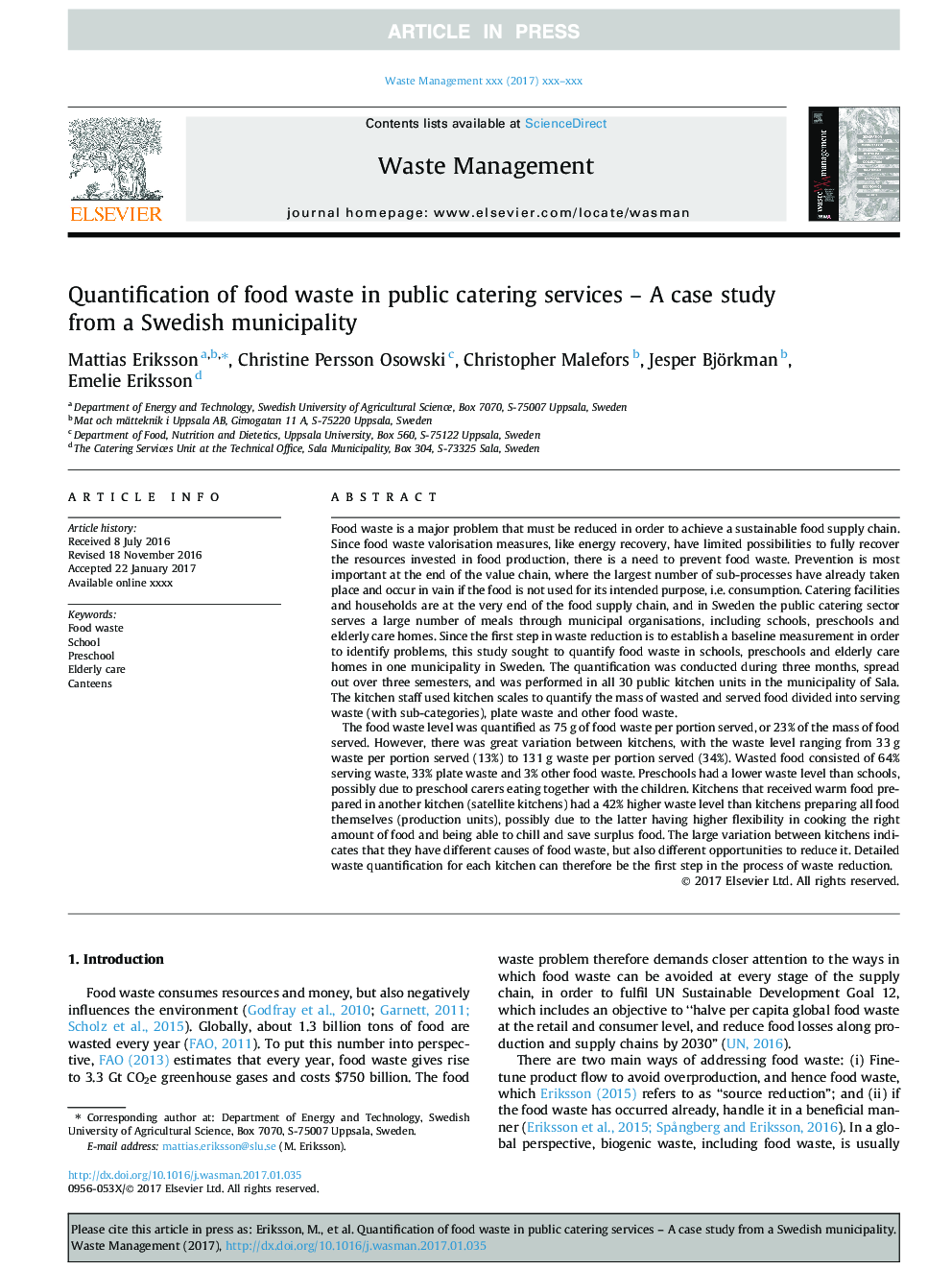| Article ID | Journal | Published Year | Pages | File Type |
|---|---|---|---|---|
| 5756978 | Waste Management | 2017 | 8 Pages |
Abstract
The food waste level was quantified as 75Â g of food waste per portion served, or 23% of the mass of food served. However, there was great variation between kitchens, with the waste level ranging from 33Â g waste per portion served (13%) to 131Â g waste per portion served (34%). Wasted food consisted of 64% serving waste, 33% plate waste and 3% other food waste. Preschools had a lower waste level than schools, possibly due to preschool carers eating together with the children. Kitchens that received warm food prepared in another kitchen (satellite kitchens) had a 42% higher waste level than kitchens preparing all food themselves (production units), possibly due to the latter having higher flexibility in cooking the right amount of food and being able to chill and save surplus food. The large variation between kitchens indicates that they have different causes of food waste, but also different opportunities to reduce it. Detailed waste quantification for each kitchen can therefore be the first step in the process of waste reduction.
Related Topics
Physical Sciences and Engineering
Earth and Planetary Sciences
Geotechnical Engineering and Engineering Geology
Authors
Mattias Eriksson, Christine Persson Osowski, Christopher Malefors, Jesper Björkman, Emelie Eriksson,
